Bursitis

Bursitis is the Inflammation of the fluid-filled sac (bursa) that lies between a tendon and skin, or between a tendon and bone. This condition may be acute or chronic. Bursae are fluid-filled cavities near joints where tendons or muscles pass over bony projections. They assist movement and reduce friction between moving parts. Bursitis can be caused by chronic overuse, trauma, rheumatoid arthritis, gout, or infection. Sometimes the cause cannot be determined. Bursitis commonly occurs in the shoulder, knee, elbow, and hip. Other areas that may be affected include the Achilles tendon and the foot. Isn’t it time you tried chiropractic care for you and your family? If you are experiencing any of the common symptoms below, please call our office now to schedule an appointment. Common symptoms include joint pain, joint tenderness, swelling, warmth over the affected joint, and limited range of motion.
Carpal Tunnel Syndrome

Carpal Tunnel Syndrome is the compression of the median nerve at the wrist, which may result in numbness, tingling, weakness, or muscle atrophy in the hand and fingers. Carpal Tunnel Syndrome is common in people who perform repetitive motions of the hand and wrist, such as typing. When the wrist is poorly positioned, there isn’t enough space for the median nerve to travel to the hand. Carpal Tunnel Syndrome is caused by pressure exerted on the median nerve at the point where it passes through the wrist. The median nerve supplies sensation to the thumb-side of the ring finger. It also supplies movement to part of the hand. The nerve enters the hand between the wrist bones (called the carpal bones) and the tough membrane that holds the bones together (the transverse carpal ligament). This space is called the carpal tunnel. Since the passageway is rigid, any swelling in this area can cause compression of the nerve (this is also called entrapment of the nerve). Isn’t it time you tried chiropractic care for you and your family? If you are experiencing any of the common symptoms below, please call our office now to schedule an appointment. Common symptoms include weakness in one or both hands, numbness or tingling of the palm of the hand, wrist or hand pain in one or both hands, pain extending to the elbow, impaired fine finger movements in one or both hands, coordination issues, weak grip, difficulty carrying items with hand grips, atrophy of the muscular bulge under the thumb, and numbness or tingling in the thumb and next two or three fingers of one or both hands.
Fibromyalgia
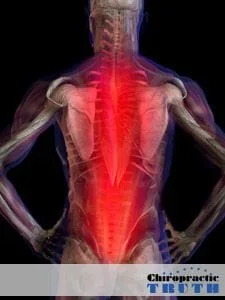
Fibromyalgia is a common condition characterized by widespread pain in joints, muscles, tendons, and other soft tissues. Some other problems commonly linked with fibromyalgia include fatigue, morning stiffness, sleep problems, headaches, numbness in hands and feet, depression, and anxiety. Fibromyalgia can develop on its own, or secondary to other musculoskeletal conditions, such as rheumatoid arthritis, or systemic lupus.
Diagnosis of fibromyalgia requires a history of at least three months of widespread pain, and pain and tenderness in a least 11 of 18 tender-point sites. These tender-point sites include fibrous tissue or muscles of the Neck, Shoulders, Chest, Rib Cage, Lower Back, Thighs, Knees, Arms (elbows) and Buttocks. The overwhelming characteristic of fibromyalgia is long-standing, body-wide pain with defined tender points. Tender points are distinct from trigger points seen in other pain syndromes. (Unlike tender points, trigger points can occur in isolation and represent a source of radiating pain, even in the absence of direct pressure.) Fibromyalgia pain can mimic the pain experienced by people with various types of arthritis. The soft-tissue pain of fibromyalgia is described as deep-aching, radiating, gnawing, shooting or burning, and ranges from mild to severe. Fibromyalgia sufferes tend to waken with body aches and stiffness.
Chiropractic care works on relieving pain and symptoms associated with fibromyalgia. Isn’t it time you tried chiropractic care for you and your family? If you are experiencing any of the common symptoms below, please call our office now to schedule an appointment. Common symptoms include multiple tender areas, sleep disturbances, reduced axercise, fatigue, body aches, and chronic muscle pain.
Joint Disease
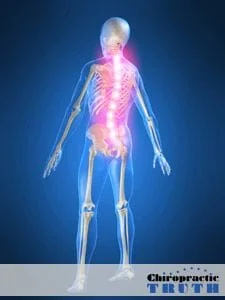
Low Back Pain

The majority of back pain patients have not experienced any trauma, accidents or major injuries prior to the onset of their problem. The cause of most back pain is the cumulative affect of improper sitting posture, poor work habits, incorrect lifting, lack of proper exercise and other lifestyle-related factors. All of these factors cause stress and imbalances on the spine and eventually pain. This is why people often injure their back by just bending over to pick up a piece of paper. The spine was already compromised and just the simple act of bending was enough to set off the problem. When this occurs, the surrounding back muscles go into spasm to protect the stressed or injured tissues of the back.
In the US, low back pain is one of the most common conditions and one of the leading causes of physician visits. In fact, at least four out of five adults will experience low back pain at some point in their lives. Thirty-one million Americans have low back pain at any given time. One half of all working Americans admit to having back symptoms each year. One third of all Americans over age 18 had a back problem in the past five years severe enough for them to seek professional help. And the cost of this care is estimated to be a staggering $50 Billion yearly–and that’s just for the more easily identified costs!
Chiropractic care works on correcting misaligned or out of place vertebrae and can remove the pressure placed on the nerve endings that line the surface of the joint and course through the space between the joints, reducing pain and improving flexibility and function. Isn’t it time you tried chiropractic care for you and your family? If you are experiencing any of the common symptoms below, please call our office now to schedule an appointment. Common symptoms include tenderness, pain, stiffness, pain that radiates into the buttocks or legs, difficulty standing erect, weakness, leg fatigue while walking, and discomfort while sitting.
Osteoporosis
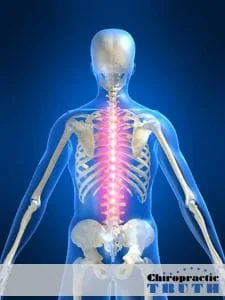
The thinning of bone tissue and loss of bone density over time. Osteoporosis is the most common type of bone disease. There are currently an estimated 10 million Americans suffering from osteoporosis, as well as another 18 million who have low bone mass, or osteopenia. Osteoporosis occurs when the body fails to form enough new bone, or when too much old bone is reabsorbed by the body, or both. Calcium and phosphate are two minerals that are essential for normal bone formation. Throughout youth, the body uses these minerals to produce bones. If calcium intake is not sufficient, or if the body does not absorb enough calcium from the diet, bone production and bone tissues may suffer. As people age, calcium and phospate may be reabsorbed back into the body from the bones, which makes the bone tissue weaker. Both situations can result in brittle, fragile bones that are subject to fractures, even in the absence of trauma.
Researchers estimate that about 20% of American women over the age of 50 have osteoporosis. In addition, another 30% of them have osteopenia, which is abnormally low bone density that may eventually deteriorate into osteoporosis, if not treated. About half of all women over the age of 50 will suffer a fracture of the hip, wrist, or vertebra. Isn’t it time you tried chiropractic care for you and your family? If you are experiencing any of the common symptoms below, please call our office now to schedule an appointment. Common symptoms for osteoporosis include low back pain, neck pain, bone pain, bone tenderness, loss of height over time, and stooped posture.
Pregnancy
Improve your pregnancy with chiropractic care.
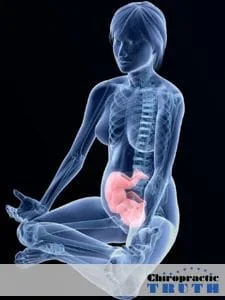
Today’s woman constantly juggles an incredible number of responsibili-ties: jobs, children, friendships, marriages, errands, appointments – the list is endless! You’ve got to be healthy just to keep up. Women have special health concerns during every phase of their lives; pregnancy is certainly one of the most important and complex phases. Although the changes women experience from pregnancy are natural, a little extra help is sometimes needed to cope with the dramatic changes in their bodies.
A Perfect Pregnancy
In addition to the noticeable changes pregnancy causes in a woman’s body, pregnancy can cause sub-tle changes in the musculoskeletal system; changes your chiropractor is able to detect and correct. Because the baby lies forward in the woman’s body during pregnancy, her center of gravity shifts and the spine alters itself to accommodate this change. As a result, many expectant mothers may experience low back and pelvic pain. These stresses and strains can be relieved with regular chiropractic care. Many chiropractic patients re-port that their deliveries were faster and more comfortable than deliveries prior to chiropractic care.
It’s especially important during pregnancy that nerve impulses flow from the brain to all parts of the body. A slightly out-of-place vertebra can create nerve irritation that snarls the body’s communication system. Using gentle spinal adjustments, the chiropractic doctor can relieve this nerve irritation, allowing the body’s energy to flow freely again and eliminate periodic pain through nature’s own healing power! Our doctor will use special, modified techniques during your pregnancy to make your spinal adjustments easy and comfortable.
It’s easier to be fit, healthy, and experience a trouble-free pregnancy when your body freely sends the right messages. Chiropractic care focuses on the overall effects of spinal misalignment on the nerves that carry health-giving energy to every cell of the body. Chiropractic helps women get well and stay well – before, during, and after their pregnancies.
Isn’t it time you tried chiropractic care for you and to get ready for your future family? If you are experiencing any of the common symptoms below, please call our office now to schedule an appointment, to see how we can help.
Sciatica

Sciatica is defined as pain that radiates from the lower back into the buttocks and down the back of one or both legs, caused by the irritation of the sciatic nerves, the largest nerves of the body. It usually begins as an acute pain in the lower back and then radiates down the back of either or both legs. There are 5 pairs of nerves that exit the spine in the lower back. These nerves make up what we know as the sciatic nerves. If the vertebrae or bones in the lower back are misaligned or out of place; or the disc between the vertebrae are swollen, bulged or herniated, the result is pressure on those nearby nerves. This can cause tremendous pain and normal daily activities become almost impossible.
Chiropractic care works on correcting misaligned or out of place vertebrae and can remove the pressure placed on the sciatic nerve, reducing pain and improving flexibility and function. Isn’t it time you tried chiropractic care for you and your family? If you are experiencing any of the common symptoms below, please call our office now to schedule an appointment. Common symptoms of sciatica include seakness of the knee or foot, sensation changes on the back of the calf or the sole of the foot, numbness, tingling, pain from the back to the calf, difficulty walking, inability to move feet or foot, and the inability to bend the knee.
Scoliosis
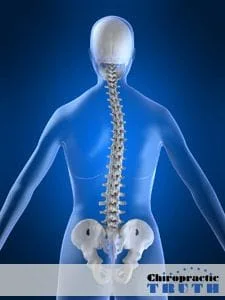
Scoliosis is a sideways curving of the spine that often gets started in childhood, when bones of the spine are still growing. In many cases, the exact cause of scolio-sis is unknown. It is thought that scoliosis is the result of a hereditary problem or an adaptation to some type of trauma, such as the birth process, or an injury such as falling off a bicycle. It usually starts with problems in the lower back or pelvis.
Scoliosis is detected by uneven shoulder heights, loss of structural balance, or a change in posture. If a spinal curve exists, this can result in pressure on the joints, discs, and nerves. Because spinal bones can continue to grow well into the early 20’s, if left uncorrected Scoliosis often worsens.
Early detection and chiropractic correction is important for optimum results. Isn’t it time you tried chiropractic care for you and your family? If you are experiencing any of the common symptoms below, please call our office now to schedule an appointment.
Subluxation
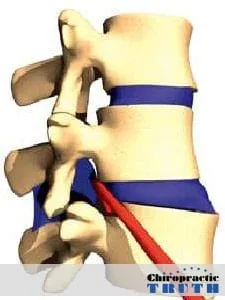
A Subluxation is when one or more vertebrae lose their normal position, they interfere with the nerves they were meant to protect. This interference can cause pressure or irritation on the spinal cord and/or on the nerve roots as they pass out of the spinal column. This misalignment of the vertebrae and pinching of the nerves is called a subluxation and is the most common aspect of what doctors call the vertebral subluxation complex. Headache, pain at the base of the skull, pain or numbness of the face, stiffness or loss of normal movement of the neck, neck pain, shoulder, arm and hand problems including pain, numbness and loss of strength and nerve related problems involving eyes, ears, nose and throat. Tension between the shoulders, mid-back pain, pain wrapping around rib cage, problems affecting the heart, lungs, stomach, gall bladder, and other digestive organs. Low back pain, pain in the legs, disc problems, hip pain, groin pain, lower abdominal pain, bladder and bowel problems, many different reproductive problems, and circulation problems in the lower body. Pain at the base of the spine, bladder and bowel problems, hip pain, and sacroiliac pain. Isn’t it time you tried chiropractic care for you and your family?
Tension Headaches
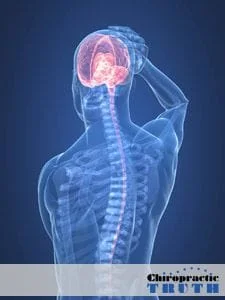
Tension headaches are a condition involving pain or discomfort in the head, scalp, or neck, usually associated with muscle tightness in these areas. Tension headaches are one of the most common forms of headache. They can occur at any age, but are most common in adults and adolescents. If a headache occurs two or more times weekly for several months or longer, the condition is considered chronic. Tension headaches result from the contraction of neck and scalp muscles. One cause of this muscle contraction is a response to stress, depression or anxiety. Any activity that causes the head to be held in one position for a long time without moving can cause a headache. Such activities include typing or use of computers, fine work with the hands, and use of a microscope. Sleeping in a cold room or sleeping with the neck in an abnormal position can also trigger this type of headache. Other causes include spinal misalignment, eye strain, fatigue, alcohol use, excessive smoking, excessive caffeine use, sinus infection, nasal congestion, overexertion, colds, and influenza. Tension headaches are not associated with structural lesions in the brain. Isn’t it time you tried chiropractic care for you and your family? If you are experiencing any of the common symptoms below, please call our office now to schedule an appointment. Common symptoms of tension headaches include dull pain, pressure-like generalized pain, worse pain in the scalp, temples, or back of the neck, feels like a tight band or vise on the head, occurs as an isolated incident, occurs constantly, occurs daily, worsened or triggered by stress, fatigue, noise, or glares, causing sleep disturbances, and it can be one sided.
Torticollis

Torticollis is a form of dystonia (prolonged muscle contractions) in which the neck muscles contract involuntarily causing the head to turn. Torticollis may occur without known cause (idiopathic), be genetic (inherited), or be acquired secondary to damage to the nervous system or muscles. It may develop in childhood or adulthood. Congenital torticollis (present at birth) may be caused by malpositioning of the head in the uterus, or be prenatal injury of the muscles or blood supply in the neck. Isn’t it time you tried chiropractic care for you and your family? If you are experiencing any of the common symptoms below, please call our office now to schedule an appointment. Common symptoms of torticollis include the enlargement of the neck muscles, asymmetry of an infants head from sleeping on the affected side, elevation of the shoulder on the affected side, stiffness of neck muscles, limited range of motion, headaches, neck pain, and head tremors.
Whiplash
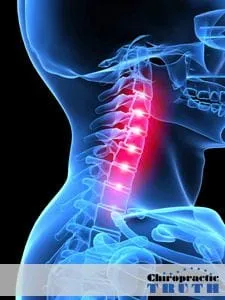
An injury to the soft tissues of the neck that occurs from a sudden jerking or “whipping” of the head. This type of motion strains the muscles and the ligaments of the neck beyond their normal range of motion. Whiplash often occurs when a vehicle stops suddenly in a car crash or is struck from behind. Either of these two actions causes things in the vehicle to be thrown forward – including passengers. A seat belt will keep a person’s body from being thrown forward, but the head may snap forward, then backward, causing a whiplash injury in the neck. In addition to car accidents, whiplash can be caused by roller coasters and other amusement park rides, sports injuries, or being punched or shaken. (Whiplash is one of the hallmarks of shaken baby syndrome). Isn’t it time you tried chiropractic care for you and your family? If you are experiencing any of the common symptoms below, please call our office now to schedule an appointment. Common symptoms of whiplash include blurred vision, difficulty swallowing, irritability, fatigue, dizziness, pain between the shoulder blades, pain in the arms or legs, pain in the feet and hands, nausea, ringing of the ears, and vertigo.
**OFTEN, YOU FEEL PAIN AND STIFFNESS IN YOUR NECK FOR THE FIRST FEW DAYS FOLLOWING A WHIPLASH INJURY. THEN, YOU FEEL BETTER, BUT THE PAIN AND STIFFNESS MAY COME BACK SEVERAL DAYS LATER. THE DISCOMFORT YOU FEEL MAY INVOLVE SURROUNDING MUSCLE GROUPS IN YOUR HEAD, CHEST, SHOULDERS, AND ARMS.